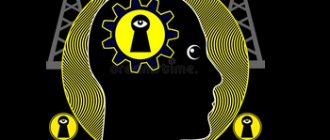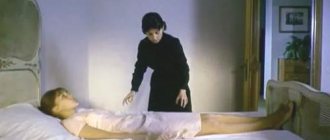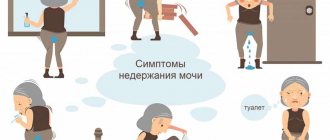Schizophrenia is a type of mental disorder that is manifested by the breakdown of thought processes, perceptions, and emotional reactions. One of the significant characteristics of the disease is its polymorphism, that is, the variety of symptoms.
Schizophrenia is diagnosed in women as often as in men, but it develops at a later age. If in males the disease manifests itself at the age of 20-28, then in women the diagnosis is made between the ages of 26 and 32. Children and elderly people rarely suffer from the pathology. The onset of the disease is not typical for older people.
Schizophrenia rarely occurs on its own; it is combined with depression, anxiety disorders, and alcoholism. Patients are prone to suicide attempts.
Women living in cities suffer from schizophrenia more often than rural women. The reasons for this fact remain unclear to date.
In the development of the disease, heredity plays a significant role. Other risk factors include:
- psychological trauma;
- abnormalities of brain development;
- stress;
- childhood violence;
- features of raising girls;
- pregnancy, etc.
Scientists agree that schizophrenia is a multifactorial disease.
First symptoms
The disease is characterized by a smooth development, it does not manifest itself acutely and abruptly. In order not to miss its onset, you need to know the first signs of schizophrenia in women. These include:
- Increased irritability.
- Gloomy mood, hostility towards other people.
- Oddities in behavior.
- Anhedonia. This symptom manifests itself in the fact that the patient loses the ability to enjoy those activities that previously brought her joy.
- Sharpening character traits.
- Poor concentration in any activity.
- Reduced need for contact with other people.
These symptoms can hardly be called specific, but close people cannot help but notice such changes in the girl’s behavior. Oddities do not appear immediately; they gain strength gradually, over 2 or more years. Such deviations are harbingers of the first attack.
Initial signs that are characteristic specifically of female schizophrenia:
- Transient short-term delusional thoughts.
- Fragmentary hallucinations.
- Hypochondria.
The disease may manifest itself in adolescence or early adulthood. Healthy girls carefully monitor their appearance. With the development of schizophrenia, untidiness and sloppiness appear. Trying to talk to a patient about problems in her behavior often leads to aggression.
Women with schizophrenia do not understand why their behavior does not suit other people. They begin to isolate themselves more and more from contacts and refuse to communicate with friends and young people.
If the mother suffers from schizophrenia, then children become ill 5 times more often than in families in which the father is ill.
Clinical picture
Many symptoms of schizophrenia appear in childhood in a reduced form; they are erased, uniform, and monotonous. Severe productive symptoms are observed relatively rarely (Mestas C., 1957), anxiety, irritability, and uncertainty dominate.
In childhood schizophrenia, clear impairments in the cognitive sphere are found, manifested by difficulties communicating with peers and a noticeable decrease in academic performance.
With the early onset of schizophrenia in childhood, quite pronounced disorders of the autonomic nervous system are recorded, sleep disturbances, appetite disturbances, and general lethargy are noted.
A relatively common symptom of the onset of childhood schizophrenia is a feeling of fear.
At an early age, fear is unconscious; at the age of 2-3 years it is already objective: fear of people, cars, trains, bridges, darkness, etc. For children with schizophrenia aged 5-7 years, nighttime obsessive fears are , accompanied by waking up, checking closed doors, listening to various sounds, and rudimentary hypnagogic hallucinations are less common.
A sick child early reveals a pathology of drives , shows indifference or aggression towards the mother, acquires unusual habits, and at the same time he may have no reaction to discomfort.
At the age of 4-5 years, cruelty towards peers and perverse attractions are noticeable. The child’s fantasies include the theme of death and disaster (Bashina V.M., 1989).
Affective mood swings and a tendency toward erased depressive states are common psychopathological formations in adolescent schizophrenia. There may be a paradoxical combination of thanatophobia with suicidal tendencies.
In adolescence, schizophrenia can manifest itself as a heboid syndrome with symptoms of autochthonous mood swings and periodically occurring dysphoric reactions.
Those around him note the strangeness of the teenager’s attractions, his indifference and emotional coldness towards close people, and his opposition to generally accepted norms of behavior. The heboid teenager is characterized by sexual disinhibition and sadistic sexual fantasies.
Relatively early, a teenager with schizophrenia shows interest in alcohol, drugs, vagrancy, and theft .
With age, a child with schizophrenia becomes “stuck” on an idea.
Psychopathological overvalued formations determine the behavior of a teenager, which is often characterized by destructive tendencies. Sometimes the patient is prejudiced against one of his peers, teases or tortures pets.
For children with schizophrenia, lethargy and slowness of movements are more typical, and hyperactivity is less common.
According to V.N. Klinkova (1992), with an increase in the degree of malignancy of early childhood schizophrenia, the following dynamics of non-verbal behavior are noted: mobility of the upper part of the face is replaced by hypomimia with rare blinking, then playing with the fingers appears with increased mobility, stereotypical grooming-like gestures. The author noted that already six months before the manifestation of the process in children, one can detect increased mobility of the oral zone and proboscis facial expressions, in particular, peculiar forms of a smile.
The clinical picture of childhood schizophrenia may be dominated by symptoms of hypochondria, developing against the background of an altered sense of self.
Hallucinations in children with schizophrenia are most often verbal in nature, but visual hallucinations also occur. “Voices” can call for violence, destruction, a negative attitude towards loved ones, in some cases they frighten the child, causing a pronounced feeling of fear.
Delusions in childhood and adolescent schizophrenia usually include ideas of persecution in their content.
Productive symptoms
Schizophrenia can produce productive symptoms in women who did not receive treatment in the early stages of its development. These include manifestations that should not normally exist - hallucinations, paranoid ideas and delusions.
In the early stages, auditory hallucinations predominate. The patient feels like there are other people's voices in her head. Sometimes women report that objects talk to them. Voices are able to comment on the behavior of a schizophrenic, they can threaten, give orders. They argue among themselves or discuss something.
Tactile hallucinations occur less frequently and visual hallucinations occur very rarely. Close people must understand that for the patient they are not imaginary. She actually sees or feels them.
Delusional ideas are varied:
- Delirium of influence. The patient believes that some forces are influencing her mind and body. These could be aliens, spirits, representatives of the FSB, etc. The methods of exerting influence seem quite real to the woman. Gadgets, television, magic, hypnosis, telepathy may be involved.
- Delirium of persecution. The woman believes that she is being watched all the time.
- Delirium of jealousy. The patient is 100% convinced that her husband is cheating on her.
- Dysmorphophobic delirium. A woman believes that she is ugly, or that she has a certain deformity that prevents her from living. She becomes fixated on this thought.
- Delirium of grandeur. The patient is sure that she is exceptional, that she has incredible abilities.
- Delirium of self-blame. The woman is convinced that she is to blame for all the troubles and illnesses of the people around her.
Other signs of the disease include obsessions. A woman is unable to get rid of the thoughts that haunt her. Most patients have ideas on a global scale, for example, about a catastrophe in the universe.
Exacerbation occurs in autumn and spring. Experts associate this fact with vitamin deficiency and increased production of serotonin.
Positive symptoms also include illusions, inappropriate behavior, speech, thinking and movement disorders. The patient’s thoughts are incoherent, her statements are monosyllabic, and often lack meaning.
Inpatient treatment for schizophrenia
Inpatient treatment is necessary for exacerbation of schizophrenia, or psychosis.
It is the success of treatment of the first psychotic episode that often determines the prognosis of the further course of schizophrenia. It is possible to treat psychosis only in an inpatient setting: this is how complex treatment of the disease can be carried out, which will include pharmacotherapy, instrumental therapy and psychotherapy.
One of the main goals during an exacerbation of schizophrenia is to relieve psychosis as quickly as possible. For this purpose, potent drugs are used, which often have serious side effects. Why is it necessary to relieve an acute condition in a short time?
Firstly, the longer psychosis occurs, the more brain function is impaired, and the more difficult it will be to recover.
Secondly, sometimes a sick person can pose a danger to himself or others.
Treating psychosis on an outpatient basis is not only ineffective, but also dangerous.
Such treatment is always associated with huge risks:
1. With psychosis, the patient may harm himself or others
So, for example, a person with delusions of persecution may after a while try to independently deal with his imaginary pursuers, and at the same time commit a crime; in other cases, the patient, fearing that his pursuers are going to inflict terrible torture on him, may commit suicide.
As the patient himself described his condition: “At this time you don’t think about anything else, you do everything like a robot, a mechanism. I was afraid to think that I could be forced to kill my own mother. But you would kill, you can’t control yourself, it’s as if you don’t exist.”
This condition is difficult for loved ones to understand, because they have known the patient for many years, and do not realize that a mental disorder makes a person completely different. It is impossible to predict exactly what the patient might do, because “orders” from voices can push the patient to any action, and delusional ideas can develop in any, most unexpected direction.
Treatment of the patient in a hospital is guaranteed to prevent such cases.
2. Risk of severe side effects
There is always a risk of dangerous side effects from drugs, which, unfortunately, cannot be predicted even if new classes of antipsychotics are prescribed. Most drugs used can cause neuroleptic malignant syndrome, a life-threatening condition. Young male patients who are prescribed the drug for the first time at a high dosage are the main risk group for NMS. In the hospital, the patient is guaranteed immediate assistance when the very first signs of this syndrome appear.
3. Implications for the future
The patient's stay in the hospital helps to insure him against actions and decisions that he, being healthy, would never make. Some patients quarrel with colleagues and friends, leave their jobs and families, sell their apartments, and lose their savings. In addition, during the period of exacerbation of schizophrenia, there is a high risk of becoming a victim of criminals, because often in a state of psychosis a person is not aware of possible dangers.
It is worth understanding that the behavior of a person in psychosis cannot be predicted: he may run away from home, and relatives will not be able to control his treatment.
In some cases, involuntary hospitalization in a psychiatric clinic is necessary. Placement of a patient in a psychiatric hospital is necessary as soon as possible if the patient has:
- command-type auditory hallucinations (voices telling the patient what to do);
- delusions of persecution;
- thoughts about suicide.
Drug treatment, physiotherapy and psychotherapy in hospital
In drug treatment, great importance is attached to the correct selection of the drug: it must have minimal side effects at the minimum dosage that would be suitable for a particular patient. When treating schizophrenia, our clinic uses the monotherapy - prescribing one drug. This can significantly reduce the number of side effects. Unfortunately, it often happens that a patient is unnecessarily prescribed several drugs of the same class. Such therapy does not bring the expected positive result, but, on the contrary, increases the number of side effects, which negatively affects the patient’s condition.
Equally important is the selection of the appropriate dosage of the drug: the same dose for some patients may be insufficient and ineffective, while for others it may be excessive and cause side effects. To determine the optimal dose of the drug, the concentration of the drug in the patient's blood is examined. If the drug has active metabolites (decomposition products in the body), then the concentration of metabolites is also analyzed.
In addition to drug treatment, physiotherapeutic methods of therapy are used in the hospital: transcranial magnetic stimulation (TMS), treatment with direct and alternating currents of low amplitude (tDCS) and other methods.
The hospital also uses specialized psychotherapeutic techniques to help the patient understand the fallacy of his delusional ideas. The listed methods show the most effective results after the exacerbation is relieved.
Treatment of schizophrenia with psychotropic drugs
Drug therapy is necessary to relieve psychosis, eliminate hallucinations and delusions, and also as a supportive measure to avoid further exacerbations.
Psychosis is often relieved with one strong drug. Then the patient is transferred to another, weaker drug, with fewer side effects. On its basis, maintenance therapy is carried out. Some clinics prescribe several antipsychotic drugs at once. This causes a large number of side effects. In particular, the cardiovascular system suffers. In our clinic, a psychiatrist selects one drug that will be most effective for a given patient. This approach is called monotherapy . We do not prescribe the drug “by eye” - the selection of the drug is based on diagnostic data.
In addition to choosing the drug itself, it is necessary to choose the right dosage. To do this, the clinic uses tests for the concentration of the drug in the blood and genetic analysis. The latter identifies gene variants that are associated with the destruction of drugs in the liver. If a patient has a gene variant that causes the drug to break down quickly, a higher dose may need to be prescribed.
The clinic must determine the concentration of the drug and its metabolites (derivatives) in the blood. The concentration of the drug must be located within a certain established range, called the “therapeutic window” . If the concentration is exceeded, side effects occur; if the concentration is too low, the drug does not work fully.
Modern antipsychotics are considered standard drugs for the treatment of schizophrenia. Unlike antipsychotics, they do not affect motor functions. Traditional antipsychotics often increase lethargy, negatively affect attention, memory, cause drowsiness, tremors, and spasms of the neck and face muscles.
Antipsychotics also have serious hormonal side effects, but the effects of their use can be corrected. The atypical antipsychotic aripiprazole causes minimal side effects, but it is suitable primarily for maintenance therapy and is not suitable for all patients.
Psychotherapy for schizophrenia
From the very beginning of treatment, psychotherapy is an important method. Psychotherapy allows the patient to realize that he is sick and that his delusions are not true. The goal of psychotherapy for schizophrenia is to correct the patient’s thinking. The use of cognitive behavioral psychotherapy has shown the greatest effectiveness.
In our psychiatric clinic, in addition to standard psychotherapy, we use metacognitive training. This method allows you to trace the patient’s thinking errors and begin work on correcting them. It is conducted by a psychotherapist and contains 8 modules:
- In the first module, work is done on the patient’s understanding of cause-and-effect relationships. The psychotherapist gives the patient tasks to determine the causes of various events - from his life or the lives of other people. In this case, the psychotherapist emphasizes that there may be several reasons for this or that event, and some reasons may be unknown to the patient. Such work helps to realize the errors of thinking in delusional attitudes.
- In modules two and seven, patients learn to understand the dangers of jumping to conclusions. This understanding is especially important in schizophrenia, since the patient, under the influence of strong emotions, always makes more cognitive errors, which can lead to increased delusions. The psychotherapist also teaches the patient to avoid stressful situations and control emotions.
- The third module teaches patients the flexibility of their beliefs. Conclusions made hastily, in haste, without obtaining complete information about the situation, often turn out to be incorrect. Patients learn to use complete information to make decisions.
- In modules four and six, patients gain insight into the reasons for other people's behavior. The psychotherapist teaches the patient to build a model of the thinking and emotional sphere of another person in order to better understand his behavior and intentions.
- The fifth module teaches patients to distinguish true memories from false ones that arise under the influence of delusions or hallucinations.
- In the eighth module, the psychotherapist works with the self-esteem and mood of patients. The patient develops adequate self-esteem, ceases to feel “worse than everyone else,” and also learns to cope with negative emotions.
As the dosage of the selected drug decreases, the role of psychotherapy in the treatment of schizophrenia increases.
Other treatments for schizophrenia in our psychiatric clinic
If necessary, biophysical methods are used in the treatment of schizophrenia. After drug treatment, TMS and micropolarization methods are used.
Transcranial magnetic stimulation (TMS)
TMS involves applying a magnetic field to the brain. TMS allows you to get rid of hallucinations, cope with delusions, and depression. There is evidence of TMS treating persistent auditory hallucinations. This method helps to extinguish the source of excitement that causes hallucinations.
Micropolarization
Micropolarization is the application of a weak direct current to the brain to change the functioning of neurons. This allows you to restore the patient’s speech, mental activity, and thought processes. Biophysical methods also make it possible to reduce drug dosages. At the same time, the negative impact of large doses of drugs on the patient’s body is also reduced.
Thanks to inpatient treatment, the acute psychotic state is relieved. When the psychosis is relieved, the patient can be transferred to outpatient treatment.
Hide
Negative symptoms
Negative symptoms are those manifestations that are expressed by the loss of the ability to plan for the future and notice joy in everyday life. These include:
- Isolation from society.
- Constantly depressed mood.
- Refusal to communicate with people.
- Lack of emotions. A woman becomes indifferent to the suffering and joy of close relatives and friends. She goes into her own world.
- Passivity.
- Craving for vagrancy.
- Lack of own point of view.
- Limited interests.
- Decreased libido. Women lose interest in the opposite sex.
- Refusal to eat. Many patients develop anorexia over time. Although in the early stages of pathology development, gluttony is often observed.
- Neglect of hygiene rules. Patients stop performing such usual activities as washing clothes, brushing teeth, washing hair, etc. They acquire a sloppy appearance.
Signs of schizophrenia in young women most often do not have a clear manifestation if the disease does not acquire a malignant course. Girls refuse to attend school, don’t go on dates with guys, and don’t hang out with their friends. They love to be alone, in their thoughts and experiences.
The speech is characterized by chaotic phrases. It is possible that words that the woman invented on her own may appear. Answers to questions are intermittent and rarely convey the full meaning.
Often patients with schizophrenia suffer from alcoholism. Patients begin to drink alcohol not because they like it, but because of a tendency to reproduce the behavior of people from their close environment. They will not feel pleasure from the actions they perform.
The leading symptom of the disease is a violation of the structure of one’s own ego. These include symptoms such as:
- Alienation from the surrounding world.
- Susceptibility to other people's influence.
- Autism.
- Existence in 2 realities: real and fictional life.
Recent studies prove that in the treatment of schizophrenia, the attitude of society towards the sick person matters. Acceptance of a changed personality in society can reduce the risk of developing complications and psychoses. A sick woman should not be treated as if she were crazy. In a tolerant world, this concept does not apply to humans.
The first signs of the disease
Treatment of schizophrenia in old age is prescribed by a doctor when the first symptoms appear. The initial period of the disease can manifest itself in the form of the following obsessive states:
- compulsions - obsessive actions;
- obsessions - obsessive thoughts;
- phobias - obsessive fears.
These conditions are subtle at first, but over time they become more pronounced, leading to the following symptoms:
- causeless outbursts of aggression;
- auditory and, in some cases, visual hallucinations;
- loss of interest in hobbies that the patient has been involved in for a long time;
- obsessions, fears.
When the first signs of illness appear, you must promptly contact a specialist.
Features of the course of female schizophrenia
Female schizophrenia has a number of differences. Among them:
- Late start. The first noticeable attack occurs around the age of 30.
- Schizophrenia hidden from most others. A sluggish disease leads to the fact that its treatment is postponed indefinitely.
- Long-term depression.
- Tendency to hysterics.
- Excessive irritability.
Difficulties in diagnosis are explained by the fact that women are characterized by increased emotionality. Bad mood and aggression are often attributed to premenstrual syndrome and hormonal changes. Therefore, latent schizophrenia can be diagnosed even several decades after its manifestation.
Some scientists tend to consider pregnancy a trigger factor for the development of the disease. However, the birth of a child can become critical only for those patients who have a genetic predisposition to mental disorders.
These women experience severe postpartum depression, which can be combined with symptoms of schizophrenia. The situation is aggravated by lack of communication, hormonal changes, stress experienced during childbirth, and responsibility for the newborn. If the manifestations of pathology are not recognized in time, the patient can harm not only herself, but also the child.
Schizophrenia is not a reason to terminate a family. Sick women can become mothers and reproduce healthy offspring.
Symptoms of the development of schizophrenia
The main symptom of schizophrenia is impaired thinking. If a disease is suspected, in order to make a diagnosis, the doctor must determine the presence of a thinking disorder and make sure that this indicator corresponds to other manifestations of the general clinical picture. Thanks to simple tests, symptoms of schizophrenia can now be detected in both women and men. The onset of the disease is diagnosed if:
- the patient uses his own language, filled with neologisms;
- there is little relationship between the patient’s concepts and the boundaries are clearly blurred;
- such a person loses the ability to think abstractly;
- in chronic forms of the disease, the patient demonstrates verbigeration (mechanical repetition of any words or phrases);
- the patient’s logic is often difficult to explain; the ability to separate the main and the secondary is impaired;
- concepts, phenomena and objects are combined according to unimportant characteristics;
- it is difficult for the patient to understand the similarities or differences between something;
- blockage of his thinking is often accompanied by a loss of control over the flow of thoughts.
Complications and consequences
Schizophrenia, the symptoms of which in women are mild, does not cause serious harm to health. Stages of remission are rarely followed by periods of exacerbations. It doesn't go as far as delusions and hallucinations. Negative symptoms will progress slowly, without leading to the development of acute psychosis.
The manic form of the disorder is very dangerous. Obsessive ideas and delusions of persecution come to the fore. At peak moments, a person can cause harm to himself and others. Often it comes to suicide.
Manic-depressive syndrome ends in suicide in 15% of cases.
Other consequences of schizophrenia include:
- Obesity or anorexia
- Memory loss, dementia.
- Insomnia, nightmares, chronic fatigue.
- Depression after an acute attack of schizophrenia. Symptoms of the underlying disease may be completely absent, with a depressed mood coming to the fore.
- Parkinsonism.
- Inability to socially interact.
- Diseases of the cardiovascular system.
- Loss of ability to work.
Schizophrenia is dangerous not only for a woman’s personality, but also for the people around her. Therefore, during an exacerbation of a severe form of pathology, hospitalization is required.
Stages of development of schizophrenia in women
The disease is characterized by three stages of development. During the course of schizophrenia in women, they replace each other. It is not always possible to divide the disease into stages. This is because pathology can have different manifestations.
In medicine, the following stages of development of schizophrenia are distinguished:
- Initial. At this stage, minor symptoms are observed that are mild in nature. Therefore, others do not even notice that they are in the company of a woman with schizophrenia. In rare cases, patients experience stress, fatigue and depression.
- Expanded. At this point, the mental disorder becomes more obvious to other people. At this stage of pathology development, it is not so difficult to identify it - schizophrenia begins to show itself with pronounced symptoms. Women experience hallucinations and delusions.
- Defect stage. The patients are diagnosed with irreversible mental disorders. They manifest themselves in the cognitive sphere and on the personality side. The patient experiences dramatic changes that cannot be hidden.
Above, an approximate diagram of the development of mental disorder in women was outlined. It can be supplemented by other symptoms at any stage of its development. It is extremely rare that schizophrenia is not accompanied by delusions and hallucinations.
Effective methods of treating schizophrenia in Russia in 2021
Schizophrenia is treated only by a psychiatrist and the patient is treated primarily in a hospital. Unfortunately, there are currently no ways to completely cure a person from schizophrenia. But the earlier the disease was diagnosed and treatment started, the more stable remission can be achieved in most cases, which means providing the patient with a high standard of living without recurrent attacks.
Now in Russia, psychopharmacotherapy plays a major role in the treatment of schizophrenia. For this purpose, three groups of psychotropic drugs are used: antipsychotics, antidepressants and tranquilizers. They are used for a long time (from a week to several years, up to lifelong use). The choice of specific drugs depends on the clinical picture.
Additional, helpful methods of combating this disease are electroconvulsive therapy (ECT), insulin comatose and atropinocomatous therapy.
Psychotherapy, family therapy, art therapy also help in the treatment and rehabilitation of patients, but cannot replace medications or other medical treatments
What is schizophrenia: features of the disease
Schizophrenia is a serious mental illness. Contrary to popular belief, it has nothing to do with split personality. The misconception was entrenched due to the fact that from ancient Greek - Schizophrenia is literally translated as splitting (schizo) of the mind (phrēn).
The nature of schizophrenia is a violation of selectivity (selectivity) of perception.
What is this?
We are always affected by many stimuli: noise outside the window, a fly flying past, light, the feeling of the floor under our feet, and so on, every second our senses perceive hundreds of stimuli, but our brain is designed in such a way that we choose from all of them only those that we need at the moment and we concentrate on them. For example, the author writing this article concentrates on the keyboard and the words appearing on the computer monitor; other stimuli, the same sound of cars outside the window, is not distracting and is not a priority - it passes by consciousness, although it is realized.
In schizophrenia, this brain function is disrupted and everything comes into the field of vision of consciousness. So we cannot simultaneously pay equal attention to differently directed stimuli, and confusion arises. But the patient’s brain still tries to build some kind of system from this mess in the head and give a logical explanation to everything that is happening, and this makes the behavior of a person with schizophrenia non-adaptive, and his perception of reality, from the point of view of a healthy person, abnormal.









